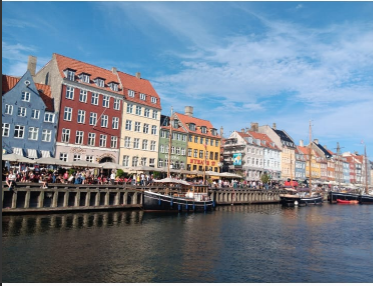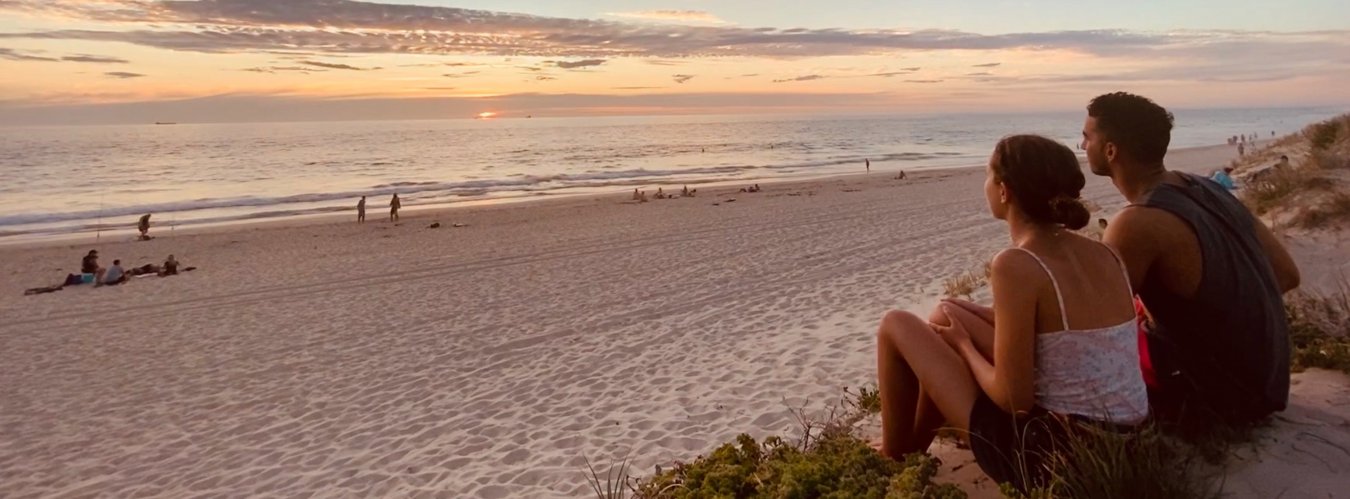
Hi, I’m Darcey, and I’m in my third year of an integrated masters in Marine Biology and Oceanography, and have just returned from a semester at the University of Copenhagen, in Denmark. I wanted to share some of my highlights and tips to making the most of your time abroad, and some of my favourite things to do in Copenhagen if you so happen to find yourself there!



Semesters run on a slightly different timetable in Copenhagen, with classes starting on September 1st, rather than in October. This meant that I moved into my accommodation in August, with some summer left to begin exploring my new city! I would definitely recommend exploring, while it’s still warm and light outside!
One of my main highlights in the summer season was Copenhagen’s Harbour Baths, with water in port of Copenhagen being so clean that you can swim at various harbour swimming areas across the city. Some of my favourite spots included Islands Brygge, as well as La Banchina – a restaraunt with an outside dock area that becomes absolutely packed on sunny days so to be sure to arrive early.




Reffen street food market – This was another summer highlight, being the largest street food market in Northern Europe – there are cuisines from across the world that come together on this harbourside, as well as its own brewery and glass blowing studio. The artificial beach area transforms into an outdoor club at night, with music events on throughout the season. The food stalls close at the end of September, but once it becomes colder Reffen transforms into an ice rink over the Christmas period.



Friday Bars – Friday bars or Fredagsbar is a Danish tradition, every Friday, student run bars are set up by each academic department and staffed by students who volunteer in shifts rotating throughout the night. A main draw of these bars is that drinks are incredibly cheap, with a bottle of beer costing 10 dkk – which is around £1.15. With different Friday bars hosted by different departments, people tend to move between the different bars – with beer pong games and different dance floors scattered around campus. Halloween parties and other events are also thrown, including J-Day, which is the first Friday in November, where the Tuborg Christmas beer is released. One of my top tips here is that to consider that these bars don’t always have card readers, and so it’s useful to bring cash, as the main form of payment at Friday bars is MobilePay, which is an online payment app that requires users to have a Danish phone number, a Danish Bank account and a Danish CPR number.



Admin – There are a couple of important things about studying in Denmark that you need to know. As we are now no longer in the EU , you will have to apply for a visa to study here. This will involve both an online application, and a physical meeting to give your documents in in London. Once in Denmark you will then need to attend your CPR meeting, which you can only book once you are in the country, and I would recommend doing early as they can book up months in advance. The CPR meeting – allows you to purchase a Danish SIM card, as well as give you access to free healthcare and so I would say that’s something quite useful to have.
Saunas – Another Danish/Scandinavian tradition are saunas! I was lucky enough to be visited by various friends throughout my time in Copenhagen, and one of my favourite things to do was to take them to ‘Winter Island’. Winter Island was a floating set of saunas and bar area on a dock in one of Copenhagen’s main canals. The saunas are heated to 80OC, and while you can book private saunas most Danes tend to book a slot in a public sauna. We gave this a try and ended up meeting a lovely couple who ended up guiding us through their sauna routine which included 20 different essential oils. The sessions were generally an hour long, and although it wasn’t technically allowed due to it not being a designated swimming zone, we were told about the helpful ladders on the side of the saunas that we could use to get out of the canal if we ‘accidentally fell in’.




Transport – One of my favourite things about Copenhagen was how safe I felt travelling round at all times! The metro lines run 24/7, with four metro lines servicing the city, and running roughly every 5 minutes during rush hour, and every 15 minutes throughout the night on Fridays and Saturdays. It was completely normal to be safe coming home on your own at night, and I don’t think I ever experienced a the metro anywhere near empty. While there are no barriers stopping you from getting on without a ticket, I really would recommend buying them, as ticket checkers petrol metros, trains and even buses with fines of 750 dkk, or around £85 given out if you don’t have a valid ticket. I’d definitely make sure to get on the right train at the airport, as if you get a train going in the opposite direction, within two stops you end up in Sweden.



One thing Copenhagen is also known for is their cycling. It’s often quicker to cycle somewhere than to get there by public transport, and so I really would recommend renting a bike during your time here (With my own bike pictured above), with options ranging from days to a year depending on how long you’re staying. A top tip would be to watch a video on Danish cycling rules, with bike lanes often busier than the roads and people not very forgiving if you don’t signal properly.



